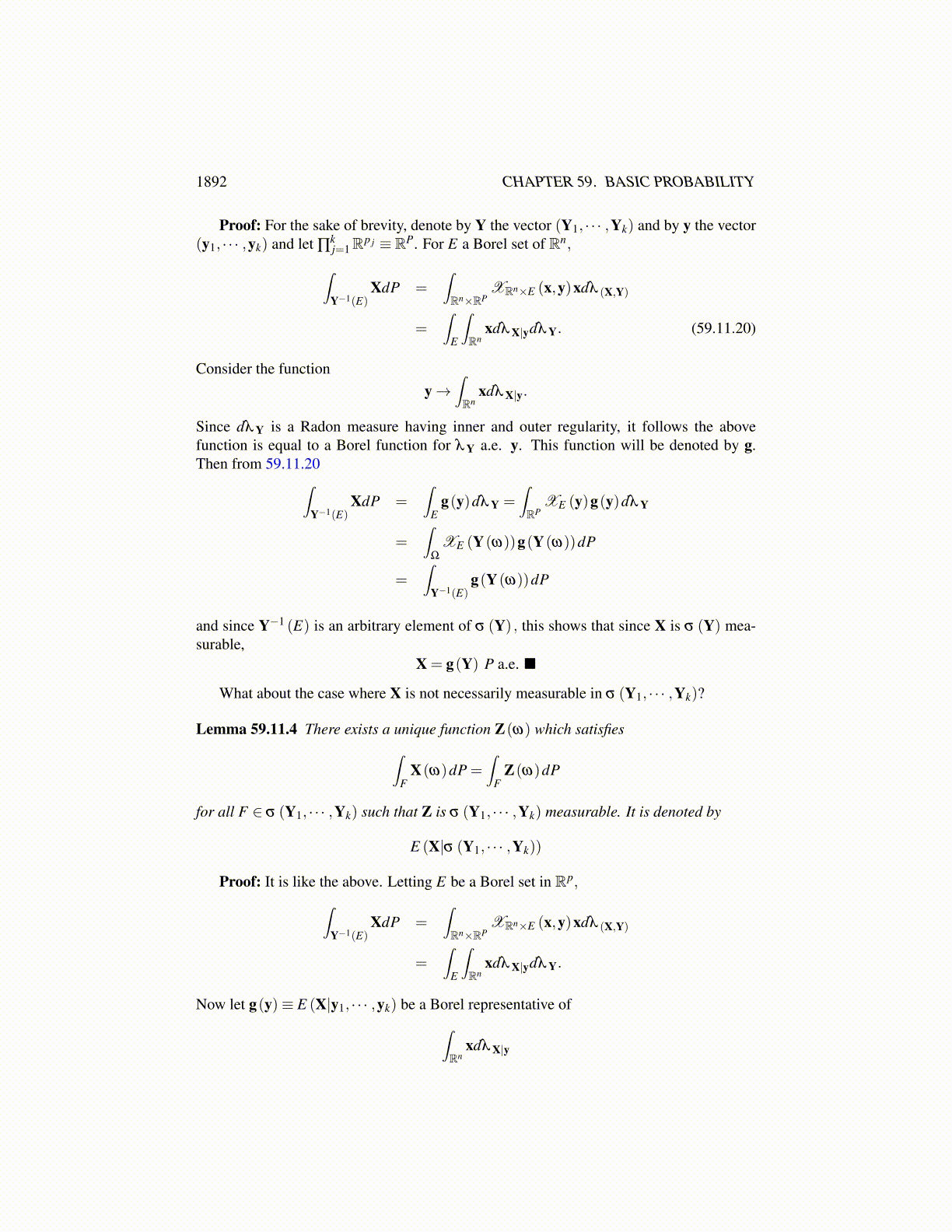
1892 CHAPTER 59. BASIC PROBABILITY
and now recall that the inverse Fourier transform maps G onto G . Hence∫f (y)ψ (y)dλ Y = 0
for all ψ ∈ G . Thus this is also so for every ψ ∈ C∞0 (Rp) by an obvious application of
the Stone Weierstrass theorem. Let {φ k} be a sequence of functions in C∞c (Rp) which
converges to
sgn( f )≡{
f̄/ | f | if f ̸= 00 if f = 0
pointwise and in L1 (Rp,λ Y) , each |φ k| ≤ 2. Then for any ψ ∈C∞0 (Rp) ,
0 =∫
f (y)φ n (y)ψ (y)dλ Y→∫| f (y)|ψ (y)dλ Y
Also, the above holds for any ψ ∈Cc (Rp) as can be seen by taking such a ψ and convolvingwith a mollifier. By the Riesz representation theorem, f (y) = 0 λ Y a.e. (The measureµ (E)≡
∫E | f (y)|dλ Y equals 0.)
Proof of the proposition: If the X j are independent, the formula follows from Lemma59.9.6 and Lemma 59.9.4.
Now suppose the formula holds. Thus
n
∏j=1
E(eit j ·X j
)=
∫Rpn· · ·∫Rp2
∫Rp1
eit1·x1eit2·x2 · · ·eitn·xndλ X1dλ X2 · · ·dλ Xn = E(eiP)
=∫Rpn· · ·∫Rp2
∫Rp1
eit1·x1 eit2·x2 · · ·eitn·xndλ X1|x2···xndλ X2|x3···xn · · ·dλ Xn . (59.11.19)
Then from the above Lemma 59.11.2, the following equals 0 for λ Xn a.e. xn.∫Rpn−1
· · ·∫Rp2
∫Rp1
eit1·x1eit2·x2 · · ·eitn−1·xn−1dλ X1dλ X2 · · ·dλ Xn−1−∫Rpn−1
· · ·∫Rp2
∫Rp1
eit1·x1eit2·x2 · · ·eitn−1·xn−1dλ X1|x2···xndλ X2|x3···xn · · ·dλ Xn−1|xn
Let ti = 0 for i = 1,2, · · · ,n−2. Then this implies∫Rpn−1
eitn−1·xn−1dλ Xn−1 =∫Rpn−1
eitn−1·xn−1dλ Xn−1|xn
By the fact that the characteristic function determines the distribution measure, Theorem59.8.4, it follows that for these xn off a set of λ Xn measure zero,λ Xn−1 = λ Xn−1|xn . Return-ing to 59.11.19, one can replace λ Xn−1|xn with λ Xn−1 to obtain∫
Rpn· · ·∫Rp2
∫Rp1
eit1·x1eit2·x2 · · ·eitn·xndλ X1dλ X2 · · ·dλ Xn−1dλ Xn